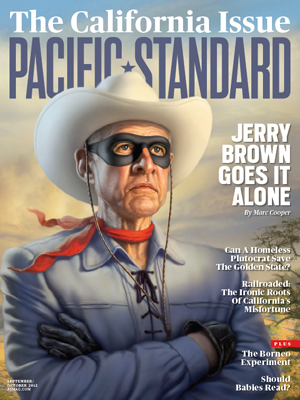
THE ISSUE: California’s initiative process, devised to give power to the people, is now exclusively the province of wealthy people and money interests. And it is inflexible; laws made by initiative can’t be changed except by another vote of the people. Initiatives have limited the ability of elected officials to govern, and made the budget particularly difficult to balance.
THE BACKSTORY: California’s community of good government reformers mostly has steered clear of reforming the process, because reformers don’t want to limit a process they want to use for other reforms. But Nicolas Berggruen and the Think Long Committee were determined to tackle the subject.
California Issue
What is Think Long thinking?
The Think Long Committee developed specific recommendations for improving California’s governance. Joe Mathews offers an in-depth look at seven specific areas afflicting the state, and what the reform organization proposed as remedies. The other six areas are:
Taxes
State Budget Deficit
Jobs
Citizens’ Council
Education
Local Government

The committee took up the subject during a meeting at the Irvine Foundation offices in San Francisco. They examined initiative reform ideas from the League of Women Voters, a now defunct Los Angeles institute called the Center for Governmental Studies, former California Supreme Court Chief Justice Ronald George, and from the writer of this article.
George was in his final months in office when the committee first met, and celebrated his retirement from the bench with a long trip to Antarctica. But he was outspoken on the state’s need to reform its initiative process, and was summoned by the committee to answer questions about the subject. That went so well—the committee largely adopted George’s prescriptions—that he was invited to join the group. He found he loved being able to freely consider what was wrong in California. Now that he was no longer a sitting judge, he liked to say, he was no longer a second-class citizen.
George had been critical of the initiative process in a high-profile speech and legal article during his final years in office. He had been particularly concerned with the inflexibility of initiatives; he noted that as chief justice he had written the opinion striking down a thoughtful effort by the legislature to clarify California’s medical marijuana law because the clarification would alter an initiative.
THE PROPOSAL: George emphasized integrating the initiative process with the rest of governance. He saw the citizens’ council piece of the Think Long proposal as part of the solution. Why not give that council, in addition to its long-term planning and governance duties, the power to evaluate initiatives and to produce its own initiatives for the ballot? People with an idea would not have to raise millions to qualify a measure if they could convince the council.
The Think Long recommendations also mixed transparency with new limits on the process. The committee called for identifying the top five contributors of $50,000 or more in an initiative campaign in the ballot pamphlet, among other disclosures. Think Long argued for increasing the number of signatures to qualify a measure, which would make it harder, while also providing initiative sponsors more time to qualify—365 days instead of 150—which would make qualification easier for groups with less money.
Think Long also proposed permitting the Legislature to fix errors in initiatives, in consultation with initiative sponsors, before measures go on the ballot. And most profoundly, the committee declared itself “generally supportive” of a constitutional amendment permitting the legislature to amend laws passed by initiative, if they are consistent with the purposes of the measure.
Implementation of such changes would not be easy, since the process is popular with the public. During one meeting, George was asked how his initiative reform plans could be put into effect. His answer: “I hate to say it, but only through another initiative.”




